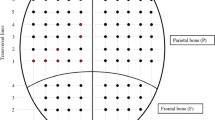Abstract
In traffic accidents with pedestrians, cyclists or motorcyclists, patterned impact injuries as well as marks on clothes can be matched to the injury-causing vehicle structure in order to reconstruct the accident and identify the vehicle which has hit the person. Therefore, the differentiation of the primary impact injuries from other injuries is of great importance. Impact injuries can be identified on the external injuries of the skin, the injured subcutaneous and fat tissue, as well as the fractured bones. Another sign of impact is a bone bruise. The bone bruise, or occult bone lesion, means a bleeding in the subcortical bone marrow, which is presumed to be the result of micro-fractures of the medullar trabeculae. The aim of this study was to prove that bleeding in the subcortical bone marrow of the deceased can be detected using the postmortem noninvasive magnetic resonance imaging. This is demonstrated in five accident cases, four involving pedestrians and one a cyclist, where bone bruises were detected in different bones as a sign of impact occurring in the same location as the external and soft tissue impact injuries.







Similar content being viewed by others
References
Brogdon B (1998) Forensic radiology. CRC, Boca Raton
Thali MJ, Yen K, Schweitzer W et al (2003) Virtopsy, a new imaging horizon in forensic pathology: virtual autopsy by postmortem multislice computed tomography (MSCT) and magnetic resonance imaging (MRI)—a feasibility study. J Forensic Sci 48:386–403
Subke J, Wehner HD, Wehner F, Szczepaniak S (2000) Streifenlichttopometrie (SLT): a new method for the three-dimensional photoralistic forensic documentation in colour. Forensic Sci Int 113:289–295
Thali MJ, Braun M, Dirnhofer R (2003) Optical 3D surface digitizing in forensic medicine: 3D documentation of skin and bone injuries. Forensic Sci Int 137:203–208
Thali MJ, Braun M, Buck U et al (2005) Virtopsy—scientific documentation, reconstruction and animation in forensic: individual and real 3D data based geo-metric approach including optical body/object surface and radiological CT/MRI scanning. J Forensic Sci 50:428–424
Metter D (1983) Rechtsmedizinische Unfallrekonstruktion von tödlichen Fussgänger-PKW-Unfällen. Z Rechtsmed 91:21–23
Buck U, Naether S, Braun M et al (2007) Application of 3D documentation and geometric reconstruction methods in traffic accident analysis: With high resolution surface scanning, radiological MSCT/MRI scanning and real data based animation. Forensic Sci Int 170:20–28
Messerer O (1885) Über die gerichtlich-mediznische Bedeutung verschiedener Knochenbruchformen. Friedrich’s Blätter für gerichtliche Medizin und Sanitätspolizei 36:81–104
Patschneider H (1963) Über Anprallverletzungen der unteren Gliedmassen bei Strasenverkehrsunfällen. Deutsche Zeitschrift für gerichtliche Medizin 54:336–366
Sellier K (1965) Zur Mechanik des Knochenbruchs. Deutsche Zeitschrift für gerichtliche Medizin 56:341–348
Mittmeyer HJ, König HG, Springer E, Staak M (1974) Die Unterschenkelfraktur verunglückter Fussgänger-Möglichkeiten und Grenzen der Unfallrekonstruktion. Z Rechtsmed 75:163–170
Boks SS, Vroegindeweij D, Koes BW, Hunink MGM, Bierma-Zeinstra SMA (2006) Follow-up of occult bone lesions detected at MR imaging: systematic review. Radiology 238:853–862
Lisowski Z, Marek Z (1982) Hyperpigmentation in the long bones of the lower limbs as a basis for vehicle identification and traffic accident reconstruction. Forensic Sci Int 20:251–255
Lisowski Z, Baran E, Marek Z (1981) Traumadiagnostik durch Untersuchung ungebrochener Knochen. Arch F Kriminol 167:110–116
Jackowski C, Wyss M, Persson A, Classens M, Thali MJ, Lussi A (2008) Ultra-high-resolution dual-source CT for forensic dental visualization—discrimination of ceramic and composite fillings. Int J Legal Med 122:301–307
Dedouit F, Telmon N, Costagliola R, Otal P, Florence LL, Joffre F, Rougé D (2007) New identification possibilities with post-mortem multislice computed tomography. Int J Legal Med 121:507–510
Yen K, Vock P, Christe A et al (2007) Clinical forensic radiology in strangulation victims: forensic expertise based on magnetic resonance imaging (MRI) findings. Int J Legal Med 121:115–123
Acknowledgements
The authors thank Urs Koenigsdorfer and Roland Dorn for their help during the forensic examinations and Suzanne Horlacher, Elke Spielvogel, Karin Zwygart, Christoph Laeser and Carolina Dobrowolska (Department of Diagnostic Radiology and Neuroradiology, University of Bern) for the excellent help and data acquisition during the radiological examination. Many thanks also to Lowri Jones for her great support with linguistic knowledge.
Author information
Authors and Affiliations
Corresponding author
Rights and permissions
About this article
Cite this article
Buck, U., Christe, A., Naether, S. et al. Virtopsy—noninvasive detection of occult bone lesions in postmortem MRI: additional information for traffic accident reconstruction. Int J Legal Med 123, 221–226 (2009). https://doi.org/10.1007/s00414-008-0296-5
Received:
Accepted:
Published:
Issue Date:
DOI: https://doi.org/10.1007/s00414-008-0296-5




